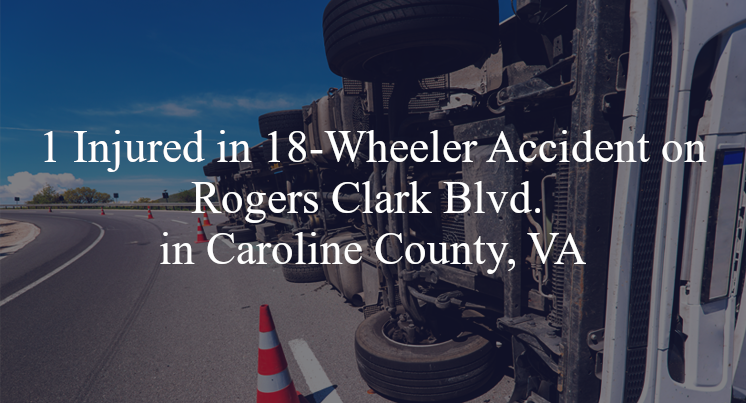1 Injured in 18-Wheeler Accident on Rogers Clark Blvd. in Caroline County, VA
Caroline County, VA —July 8, 2025, One person was injured following an 18-wheeler accident that occurred Tuesday on Rogers Clark Blvd.

According to reports, an 18-wheeler was traveling in the area of Rogers Clark Boulevard and Ladysmith Road, when a Ford F-150 turned in the path of the semi resulting in a collision, causing the truck to overturn.
When first responders arrived on the scene they found the truck driver had sustained non life-threatening injuries and transported them to the hospital. It's unclear if anyone in the Ford was injured, and at this time officials have not released any updates from the investigation.
Commentary
When a pickup turns in front of an 18-wheeler and causes it to overturn, people often assume the truck had no choice but to react and couldn’t avoid the crash. But a closer look at the circumstances—especially what led up to the turn and how the truck responded—can reveal a lot more than the surface details suggest.
According to reports, the driver of a Ford F-150 turned into the path of a semi-truck at the intersection of Rogers Clark Boulevard and Ladysmith Road, leading to a collision that caused the 18-wheeler to roll over. At first glance, it may seem like a clear case of the pickup driver making a dangerous move. But that doesn't mean the investigation stops there.
One unanswered question is whether the turn was unsafe—or whether the truck was approaching too fast for the driver to complete it safely. That’s not just about posted speed limits. It’s about how the truck was being operated in real time. Did the driver anticipate the turn? Did they have time and space to respond appropriately? The truck’s engine control module (ECM) can help answer those questions by showing speed, throttle, and braking data in the seconds before impact.
Another angle to consider is how and why the truck overturned. A properly loaded and balanced semi shouldn’t roll over from a collision with a pickup unless certain conditions are at play. Was the cargo secure? Was it top-heavy or improperly distributed? Was the truck already swerving or braking hard, causing a shift in momentum? I’ve handled cases where rollovers happened not just because of the collision, but because the truck was set up to fail the moment something went wrong.
Visibility at the intersection also matters. Were there any obstructions or layout issues that made it harder for either driver to see the other? Intersections are often overlooked as contributing factors in crashes like this, especially when poor signage or road design plays a part.
Finally, there’s still no public information about the occupants of the Ford F-150. Depending on their condition, the legal questions may shift. But regardless of the injuries involved, the investigation needs to determine not just who turned, but whether everyone involved was in a position to avoid the crash if they’d been given the chance.
Key Takeaways:
Determining fault requires more than knowing who turned—it requires understanding what every driver could or couldn’t do to prevent the crash.
- It’s not yet clear whether the Ford driver made an unsafe turn or whether the truck’s speed played a role.
- Black box data can clarify how the truck was operating and whether the driver had time to respond.
- The truck’s rollover raises questions about cargo stability, load balance, and how the vehicle was handling.
- Intersection layout and visibility may have contributed to the conditions leading up to the crash.

“These are essential reads for anyone dealing with the aftermath of a truck wreck”– Attorney Cory Carlson